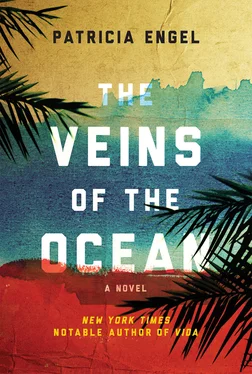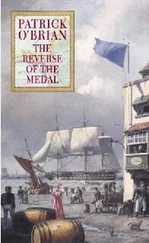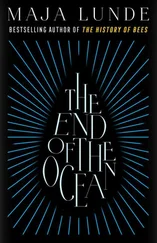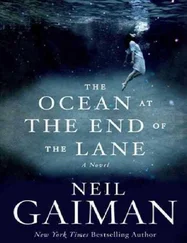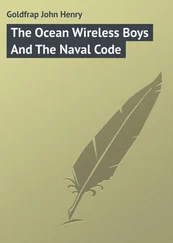The only suspicious activity Mo can think of to tell the cops about is the Swiss guys who came the other day, asking questions about the new dolphin.
“Goddamn,” he says. “They probably came here to scout the place.”
In the afternoon, I overhear Rachel telling Mo that maybe they should try taking me out on the boat with them to look for the dolphin. They’re standing in the shade under the observation tower and don’t see me coming down the stairs behind them.
“She’s the only person Zoe let get near her,” Rachel reminds him.
“She doesn’t know the first thing about those animals or how to be in the water with them. We don’t need that kind of liability right now.”
Then their talk turns to Nesto.
“We’ll have to get someone to double-check the Cuban’s fence work from now on,” Mo says. “Got to make sure he’s not the one getting sloppy on us.”
Nesto and I stay late that afternoon. He’s rebuilding the pen we’ve taken apart, working diligently to ease the day’s chaos, and I’m talking to the last guests to leave before closing, Iowans wondering if it’s true what the news said that afternoon, that a dolphin escaped.
I give them what Mo said would be the official story: the fence broke open during the storm and the dolphin probably got disoriented, but will surely return to her home here.
“They always come back,” I say, hoping that I’m lying.
At home, Nesto and I don’t speak of what we’ve done, as if, even by admitting our culpability to each other, we’ll be discovered.
Paranoia sets in. Nesto feels eyes on him everywhere. The police call him in to question him again and he always gives the same answers.
The trainers still go out on the boat, believing their own tale that the dolphin has just lost her way.
The investigation turns up no evidence. The security guard who was on duty that night swears he did his complete rounds, checked the pen several times, and didn’t hear anything unusual out on the water.
Nesto and I float together in a strange state of hyperawareness.
I feel no regret or pride, just relief and a quiet satisfaction, as if Nesto was right after all — I’ve begun to settle my debt, and somehow things are falling into balance.
One morning, I see Jojo’s boat come up the canal and pass me on the dock where I sit with my legs hanging over the edge, dangling above the water. He slows down, waves to me, and cuts the engine as the boat bobs a bit closer to the dock.
“You still working over at the dolphinarium?”
“Yeah.”
“I heard about the animal that got out. They recover her yet?”
“Not yet.”
“What are they saying about it?”
“The whole fence came down. Looks like it toppled over in the rains.”
“We’re talking about a hundred-thousand-dollar animal here. That’s the going rate for wild-caught these days. No question somebody broke her out. Maybe even stole her for another facility.”
“But she was a rescue.”
“It’s animal laundering just the same,” he says, touching his beard, starting the engine up again. “Secondhand dolphins are still worth a pretty penny.”
“Where would somebody hide a dolphin?”
“There are houses on water all over these coasts. Somebody would just need to build a pen. It’s easy. And it’s been done before.”
He stares at me so long I wonder if my face is giving anything away.
“They think it might have been activists,” I tell him.
“Could be. Last summer a couple of them tried to free a dozen manatees that were stranded from the red tide and held in a pen up in Islamorada.”
“Did they get away with it?”
“Only two or three manatees made it out. But someone turned the folks in. They got arrested. I think they got probation and had to pay some fines. No matter. I’m sure if you’d ask them, they’d say it was worth it.”
“I’m sure they would.”
“There’s also the chance the animal died and they’re saying it’s stolen so they don’t have to report the death.”
“Why wouldn’t they want to report it? Aren’t the animals insured?”
“Sure, but they also want to keep down their official animal turnover numbers. Lots of places do that. Nobody likes hearing about dead dolphins, or wants to draw attention to the fact that captives are lucky if they live ten years, and wild ones can easily live up to fifty.”
“How do you get rid of a dead dolphin?”
“How you think? You wrap it in a net, drag it out on a boat, load it with big rocks and sink it far out in the ocean.” He points toward the horizon. “You’d find yourself a dolphin boneyard not too far out there if you only knew where to look.”
The dolphin doesn’t return.
A few nights later, I hold on to Nesto tight, put my mouth to his neck, and whisper as softly as I can into his ear, “Nobody will ever know it was you and me.”
He nods, kissing me. Then he tells me a story, a patakí, of the Ibeyís, los jimaguas, the divine twin children of Changó and Ochún who were raised by Changó’s mother, Yemayá. The twins, a boy and a girl, were playing in the forest when they encountered the devil who set traps for humans and, after catching them, would eat them. The twins were trapped now themselves, and one of them hid while the other stepped forward and made a deal with the devil that if the child could dance longer than the devil, the child would be freed. But the devil didn’t realize there were two children, and the twins played their tambourine and danced and danced with the devil, and when one child became tired, they switched places and danced and danced until the devil grew so exhausted he had to give up. With the devil on the ground gasping, barely able to speak, the Ibeyís made him promise to stop his hunting and trapping of humans and let them roam the earth free as they wished. And so the Ibeyís became known as the protectors of all creatures, forever revered as the two young ones who, with their cleverness, together outsmarted the devil.
Tonight, hours before he’s due to leave for Cuba in the morning, Nesto does an ebbó to Elegguá, asking for assistance with his plan to reunite his family. I watch as he arranges four coconuts on the edge of the mattress, places a card with Elegguá’s image on the table beside the bed, and lowers his head before it, making the sign of the cross. He takes a coconut in hand, rubbing it along his body from head to foot until he’s done so with all four coconuts, asking Elegguá, controller of paths, to change his fortune and bring his family to him. Then he goes outside and I follow, watching from the veranda as he places a coconut on each of the four points of the Hammerhead property surrounding the cottage. He starts in the east, facing the ocean, smashing each coconut with a hammer until it’s a mess of meat and juice, jumping over the broken shells until he finishes the last one, and returns to the cottage, careful not to look back over his shoulder or he’ll break the ebbó. Thunder rolls over just as he passes me on the veranda, and I know Nesto is pleased because thunder is a sign from Elegguá’s friend Changó, galloping through the heavens on his white horse, that his petitions have been heard and will be answered.
We are both at the airport in Miami, after a long bus ride up from the Keys before sunrise, about to board flights to opposite ends of the Caribbean.
My trip was planned on impulse, another piece of restitution, the final trip my brother was never able to take to witness for one last time the first home we both knew.
I am also leaving because I don’t want to be alone in the cottage wondering what’s on the other side of Nesto’s journey.
A representative from the travel agency meets Nesto and the other mulas outside the airport, handing him a duffel filled with parcels to be dropped off with its agent in Havana for delivery.
Читать дальше
